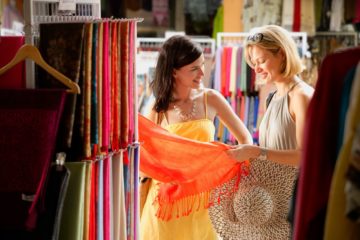The fashion industry is increasingly leveraging personalization and customization to enhance the shopping experience and meet the diverse preferences of consumers. These strategies are transforming the way customers interact with brands, offering tailored experiences that drive engagement and loyalty. This blog explores the impact of personalization and customization in fashion e-commerce, the technologies driving these trends, and examples of brands leading the way.
The Importance of Personalization in Fashion E-Commerce
Enhanced Customer Experience:
Personalization involves using data and insights to tailor the shopping experience to individual customers. This can include personalized recommendations, targeted marketing campaigns, and customized content. By offering a more relevant and engaging experience, brands can increase customer satisfaction and drive sales.
Example: Stitch Fix
A personal styling service, uses data and algorithms to curate personalized clothing selections for each customer based on their style preferences, size, and feedback.
Increased Customer Loyalty:
When customers feel that a brand understands and caters to their unique preferences, they are more likely to develop a strong sense of loyalty. Personalized experiences can help build long-term relationships between brands and their customers.
Example:
Sephora’s Beauty Insider program offers personalized product recommendations and exclusive rewards based on customers’ purchase history and beauty profiles.
Technologies Driving Personalization
Artificial Intelligence (AI):
AI plays a crucial role in personalization by analyzing vast amounts of data to identify patterns and preferences. Machine learning algorithms can predict customer behavior and make real-time recommendations, enhancing the shopping experience.
Example:
Amazon’s recommendation engine uses AI to analyze browsing and purchase history, suggesting products that customers are likely to be interested in.
Augmented Reality (AR):
AR technology allows customers to virtually try on products, such as clothing, accessories, and makeup. This interactive experience helps customers make informed purchasing decisions and reduces the likelihood of returns.
Example: L’Oréal’s ModiFace
An app uses AR to let customers try on makeup products virtually, offering a personalized and immersive shopping experience.
The Rise of Customization in Fashion
Customized Products:
Customization allows customers to personalize products to their exact specifications, from selecting colors and fabrics to adding monograms and unique details. This level of personalization enhances the perceived value of the product and creates a sense of ownership.
Example: Nike’s NIKEiD Platform
Enables customers to design their own sneakers, choosing from a wide range of colors, materials, and personalization options.
On-Demand Manufacturing:
Advances in technology have made on-demand manufacturing more feasible, allowing brands to produce customized products quickly and efficiently. This approach reduces waste and inventory costs while meeting the specific needs of customers.
Example: Indochino, a custom menswear brand, offers made-to-measure suits and shirts that are tailored to each customer’s measurements and style preferences.
The Future of Personalization and Customization in Fashion E-Commerce
Data-Driven Personalization:
As data collection and analysis techniques continue to improve, brands will be able to offer even more precise and personalized experiences. Integrating data from various touchpoints, such as social media, purchase history, and customer feedback, will enable brands to create holistic and tailored experiences.
Example: Spotify’s personalized playlists,
Such as Discover Weekly, use data-driven insights to curate music recommendations tailored to each user’s listening habits.
Sustainable Customization: Customization can contribute to sustainability by reducing overproduction and waste. Brands that offer made-to-order products can align with environmentally conscious consumers who value sustainability and ethical production practices.
Example: Brands like Ministry of Supply use 3D knitting technology to produce customized garments on-demand, reducing waste and improving sustainability.


